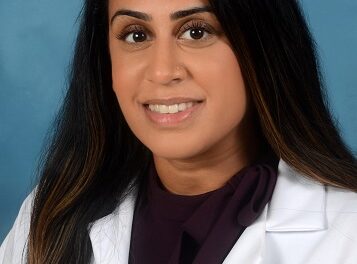.jpg) Good Samaritan Medical Center is dedicated to providing comprehensive patient care to Palm Beach County with the assistance of new technological advancements and services. The hospital recently began providing two innovative minimally invasive treatment options for its lung lesion and symptomatic uterine fibroid patients.
Good Samaritan Medical Center is dedicated to providing comprehensive patient care to Palm Beach County with the assistance of new technological advancements and services. The hospital recently began providing two innovative minimally invasive treatment options for its lung lesion and symptomatic uterine fibroid patients.The first treatment option, the Acessa procedure, is offered at Good Samaritan for women suffering from symptomatic uterine fibroids. The procedure addresses all fibroids like a hysterectomy, but with Acessa, the goal is to do so without damaging or having to remove the uterus. Good Samaritan Medical Center is the first hospital in Florida to bring this technology to the community.
Acessa utilizes radiofrequency ablation and treats each fibroid by applying energy through a small needle array. It is designed so that the surrounding normal uterine tissue should not be damaged or otherwise affected. Over time, the treated fibroid tissue shrinks and may become completely reabsorbed by the body. Acessa is performed under general anesthesia, and only two small (approximately ¼”) abdominal incisions are needed during the procedure. There is no cutting, suturing or removal of the uterus itself.
 The second minimally invasive treatment option, the superDimension™ System, is used specifically for the treatment of lung lesions. With lung cancer being the leading cause of cancer-related deaths in the United States, the challenge of early diagnosis and treatment is more critical than ever. This new treatment alternative at Good Samaritan may aid in the diagnosis of lung cancer and potentially overcome limitations of traditional diagnostic approaches. Needle biopsies, for example, may cause a collapsed lung and traditional bronchoscopy may cause bleeding, infection, trouble breathing or a low blood oxygen level. Some patients have to undergo an open lung biopsy under general anesthesia – which may result in an infection or an air leak into the chest – just to find out if their lesion is cancerous or not.
The second minimally invasive treatment option, the superDimension™ System, is used specifically for the treatment of lung lesions. With lung cancer being the leading cause of cancer-related deaths in the United States, the challenge of early diagnosis and treatment is more critical than ever. This new treatment alternative at Good Samaritan may aid in the diagnosis of lung cancer and potentially overcome limitations of traditional diagnostic approaches. Needle biopsies, for example, may cause a collapsed lung and traditional bronchoscopy may cause bleeding, infection, trouble breathing or a low blood oxygen level. Some patients have to undergo an open lung biopsy under general anesthesia – which may result in an infection or an air leak into the chest – just to find out if their lesion is cancerous or not.However, with the addition of the superDimension™ System, physicians at Good Samaritan Medical Center can perform Electromagnetic Navigation Bronchoscopy™ procedures to obtain lung tissue biopsies from the peripheral regions. The system uses CT scan images to create a 3D bronchial tree of the thousands of tiny pathways to pulmonary targets inside the lungs. The navigation system, LungGPS™, then provides a roadmap that is designed to allow physicians to guide tiny tools through the lung pathways so they can take tissue samples of the lesion and place markers for future treatment. The technology helps physicians navigate and access difficult-to-reach areas of the lungs from the inside, so patients with cancer can receive treatment as soon as possible, and those with benign lesions can avoid unnecessary procedures.


























